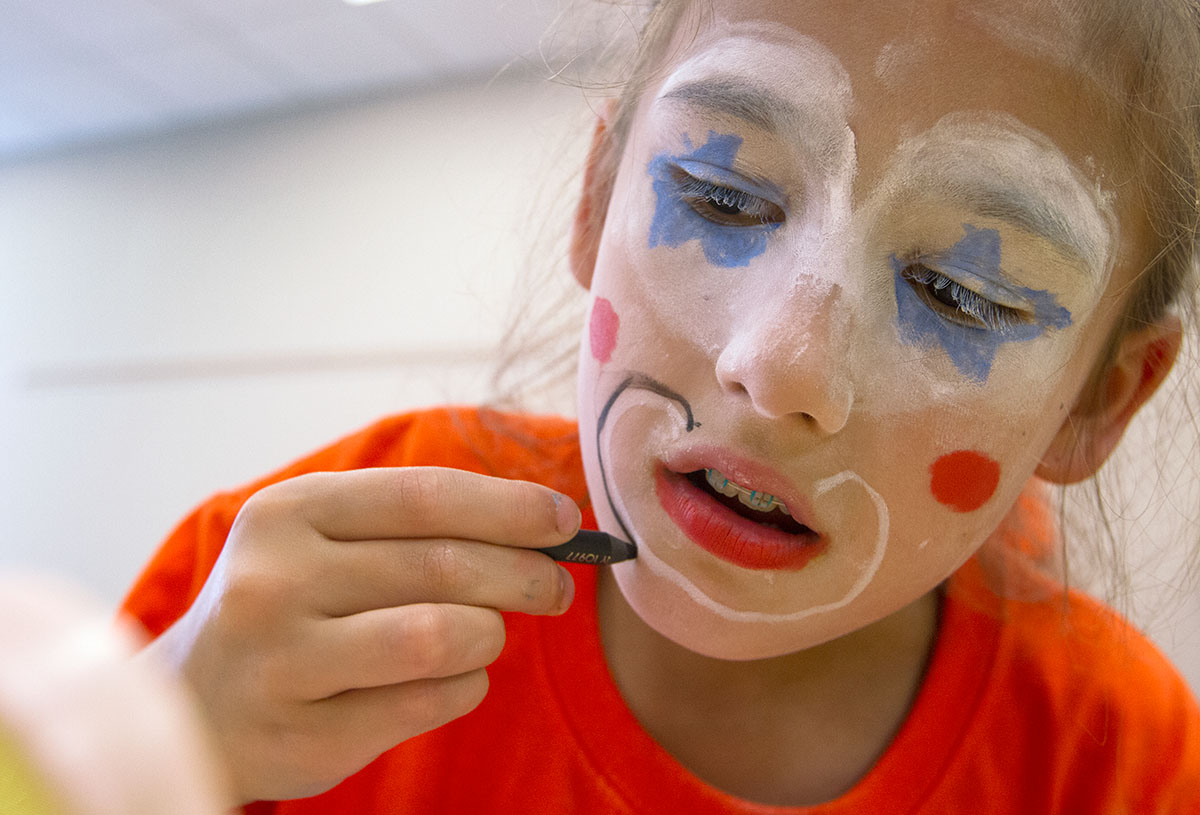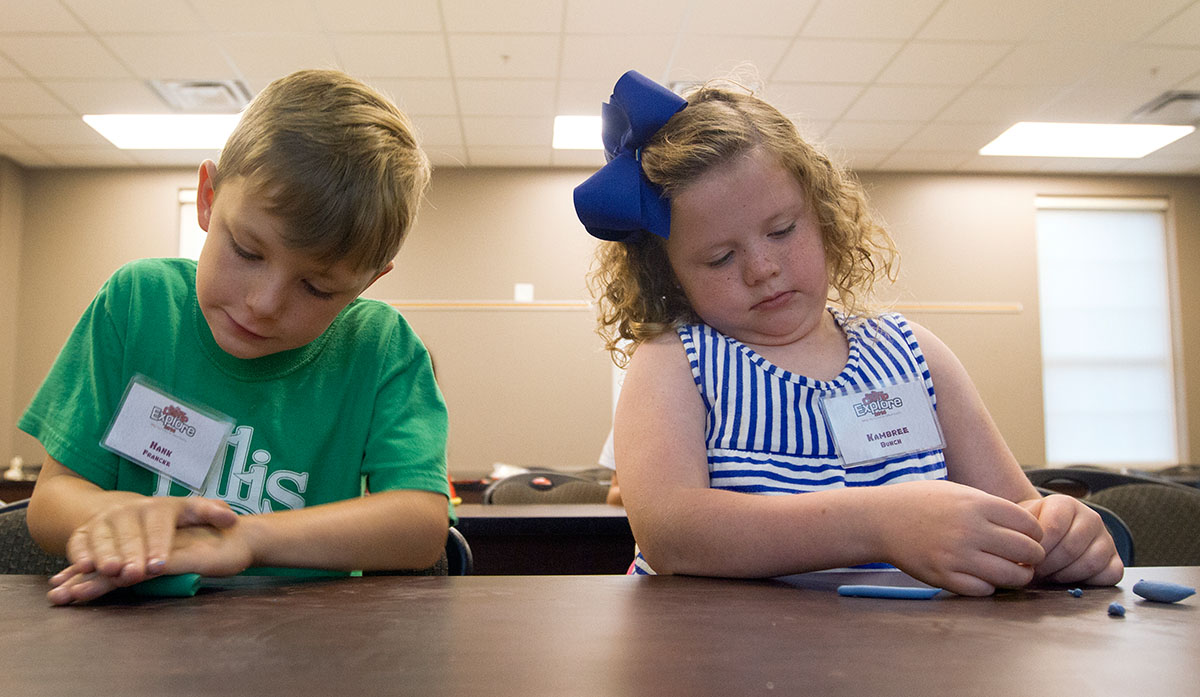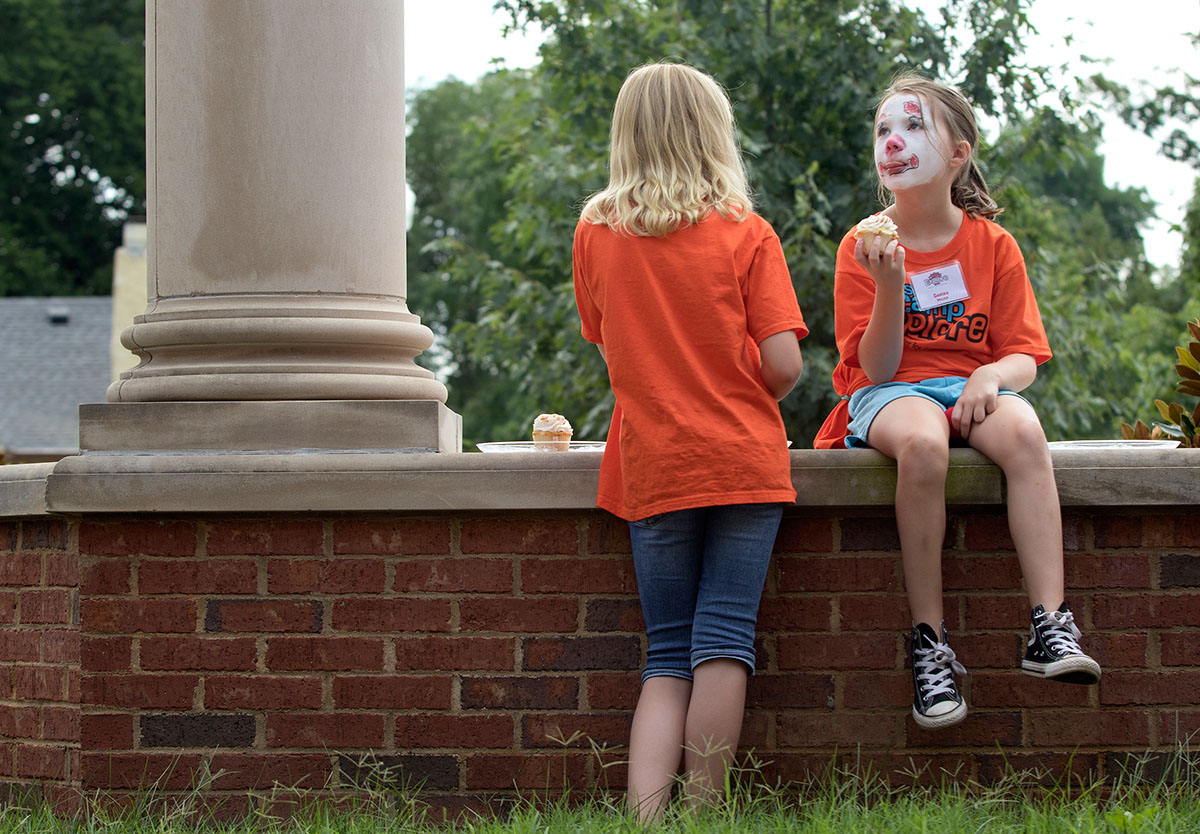By Josh Raymer
Had you walked past the Math workshop on Thursday during Camp Explore, a strange scene would’ve greeted you: 15 children wearing one glove, blowing bubbles and bouncing them on their gloved hand as many times as possible before the bubble popped. At first glance, this activity might appear to be silly summer camp fun. Peel back the layers of learning, however, and you’d find a minds-on component to match the hands-on fun.
“That’s a great example of hands-on, minds-on learning,” instructor Allison Bemiss said. “If you walked into the room, you would think these kids were just playing with bubbles. But they did a lot of work the day before with ratios to create their bubble solution, they collected data during the bouncing, and the next day they analyzed the data.”
Hands-on, minds-on learning is a hallmark of the programs offered by The Center for Gifted Studies and Camp Explore is no exception. All five classes – Math, Clowning, Art, Science, and Language Arts – challenged campers to think while they constructed homes of craft sticks and marshmallows, wrote stories, and created works of art.
Clowning instructor Nick Wilkins used juggling and clown makeup to forge a mind-to-hands connection in his class. “The hands-on element is applying a clown makeup,” he said. The minds-on part is designing the face they want and implementing it with their hands. Same thing with juggling – the minds-on has to come before the hands-on. They have to know the patterns and basic instructions that were presented to them before they can juggle.”

In Art, instructor Andee Rudloff explored concepts like visual language – emojis and icons – and color theory before molding buildings, faces, and pots out of clay. “The students deciphered the nine basic shapes from the Empire State Building, then reconfigured those shapes into a new structure which they had to name and explain the purpose it served,” she said.
Animal habitats and adaptations were the focus in Science taught by Andrea Heming, and campers explored stations that modeled the various adaptations. In one station, that meant wearing goggles made from toilet paper rolls, duct tape, and safety glasses that simulated how some animals can only see straight and not side-to-side. Campers at another station used bear paws made of rubber gloves, duct tape, and spoons to pick up small rocks and beads to get them into a bucket. These stations were both fun and educational.
“They’re taking everything they’ve learned about habitats and adaptations and making their own animal that’s a mash-up of two animals,” Andrea said. “One student put a tiger and an elephant together. Once they had their animal, they had to describe what kind of habitat that animal would live in and construct it using recycled materials and craft supplies.”

Language Arts saw campers reading and writing every day. Instructor Mary Evans noticed an encouraging trend as the week went on and everyone gained valuable experience. “Some of the students who lacked confidence as writers at the beginning of the week, who thought everything had to be perfect, they now go straight to getting their ideas on paper,” she noted.
Summer camp is supposed to be fun, but at Camp Explore, it’s even more important to make sure the campers are learning while enjoying activities. Andrea said she couldn’t imagine trying to teach science without giving students the proper context before starting an activity. “If they’re not learning about camouflage or the difference between what a herbivore and omnivore eats, they’re not getting that essential vocabulary,” she said. “What we try to do is increase their learning and engage them with activities they’ll remember.”
Part of creating memorable learning experiences is meeting kids where they are in their world. Allison designed all her math activities with that principle in mind.
“I want learning to be authentic to the kids’ real world,” she said. “I think you do that by integrating a lot of different content areas. If you want kids to be creative problem solvers and critical thinkers, you can’t limit creativity to just art. It has to be across all content areas. When you make it applicable and interesting to their world, you have that engagement piece that is so critical to hands-on, minds-on learning.”

